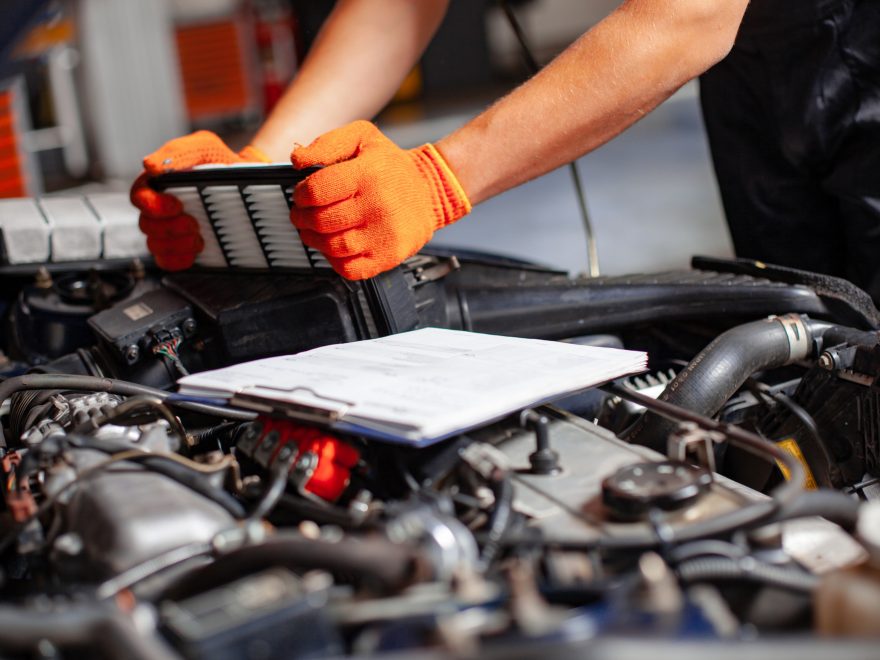Going to the doctors once a year is a great way to catch diseases early and prevent them from spreading to the rest of your body.
If you keep up with your health, then you will live longer, be able to do more, and look physically better.
The same is true for your car. Yearly car maintenance can help keep your vehicle stay in great shape and extend its lifetime.
A single car has about 30,000 parts if you count every piece including the screws that hold it together. It’s important to keep each of those parts in top condition. Read on to learn more about some of these components and why they need regular maintenance.
The Importance of a Car Diagnostic Test
One of the best recent advancements in car technology was the implementation of computers that report on the components in a car and alert you when something is wrong. This is what is going on when the check engine light comes on your dashboard.
Once that light has come on, you know you are in for a costly fix. But, if you have your car regularly maintained then often your mechanic can find problems before they become serious.
Mechanics have specialized software that can read the computer in your car to pinpoint potential problem areas. This is due to the extensive number of processors, microchips, and sensors in your car.
A car diagnostic test can let you know if there are any pending problems with your engine, transmission, brakes, and other important systems. Mechanics can also check for performance issues by reading the data from your fuel injector, ignition coils, and throttle.
Why Can’t I Diagnose My Car Myself?
Before cars were computerized, it would take hours to figure out what is wrong with a car making repairs very costly. Today, much of that hassle is avoided.
The software used to read car computers is available on the market, if you have a few thousand dollars laying around.
But even if you had that software, you would still have difficulty diagnosing your car. The mechanics don’t just read a code and consult a manual to find out the problem that triggered your check engine light.
Instead, the code only tells the mechanic what components have readings that are out of range. Then with that information, the mechanic can use their experience to diagnose what the underlying problem might be.
This kind of testing has made car safety easier for all cars including expensive vehicles, read more here.
You should also bring a car in for diagnostic testing if it is used and you are planning on purchasing it. If the seller doesn’t agree, then you should walk away from the sale.
Car Maintenance Tips for Owners
While your computer is taking care of the mechanical systems in your car, you also need to pay attention to the fluid levels of various liquids in your vehicle. Perform regular checks on these fluids to ensure your car functions its best between inspections.
Oil
Oil is used to lubricate the metal parts of your engine. If it runs out, the metal rubbing against each other will cause friction that produces heat that is bad for the parts.
And if you have oil but it is dirty, you can also injure your vehicle. Dirty oil over time will corrode the parts in your engine.
Transmission Fluid
Similarly to the oil used in engines, transmissions need lubrication to function well. If it runs low then your transmissions life will be shortened from contaminants.
Coolant
Coolant is a fluid that is used in your radiator to help it absorb heat. It is made of ethylene or propylene mixed with water.
Over time, the coolant in your vehicle breaks down. This is because it is constantly exposed to hot temperatures.
When this happens, rust can form in your engine preventing the radiator from doing its job. So keep up with your coolant levels!
Brake Fluid
Brake fluid, fortunately, isn’t like these other fluids. It doesn’t get dirty or evaporate. But it can absorb the moisture in the atmosphere around it.
Over time, the water particles that get dissolved into the brake fluid are heated and this can cause air pockets to form disrupting your brake lines. Your mechanic should perform test your brake fluid since they will know how to tell whether it needs to be changed.
Steering Fluid
Power steering fluid is used to make turning the wheel easier. If it isn’t changed, then it becomes difficult to turn and your wheel can feel heavy.
Other Routine Checks
While maintaining your fluid levels will do a lot to keep your vehicle in good shape, they aren’t the only things you can check.
You should also take a look at your tire pressure regularly and monitor the alignment of your tires.
If the pressure in your tires isn’t right, then it can affect the ability of your car to brake and stabilize itself.
To find out what the tire pressure should be for your vehicle, check the owner’s manual. Not all vehicles require the same pressure.
Your alignment allows your vehicle to drive down the road in a straight line without your having to correct it. If your tires aren’t aligned, then your car may vibrate slightly or drift in one direction.
You can also tell your alignment is off if the tread on your tires is wearing unevenly. Take your car to be serviced if you notice this.
For More Information
Yearly car maintenance is the surest way to keep your vehicle road-ready for the maximum number of miles. Take the time to treat your car with care and it will pay off in the long run.
For more information on car maintenance, check out the rest of our blog today!

